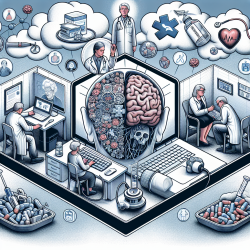Introduction to the Human Phenotype Ontology (HPO)
The Human Phenotype Ontology (HPO) is a transformative resource that provides a comprehensive framework for describing and analyzing phenotypic abnormalities associated with human diseases. Since its inception in 2008, HPO has become a global standard for phenotype exchange, facilitating advancements in precision medicine and genomic diagnostics.
Why Practitioners Should Care
For practitioners in special education and therapy, understanding and utilizing HPO can significantly enhance diagnostic accuracy and therapeutic interventions. By integrating HPO into practice, professionals can benefit from:
- Improved Diagnostic Precision: HPO's structured vocabulary allows for precise identification of phenotypic abnormalities, aiding in the accurate diagnosis of complex conditions.
- Enhanced Genomic Interpretation: The ontology supports combined genomic and phenotypic analyses, crucial for identifying gene-disease relationships and understanding disease mechanisms.
- Interoperability in Digital Medicine: HPO enables semantic interoperability, ensuring that phenotypic data can be seamlessly integrated across various digital platforms and healthcare systems.
Key Extensions and Applications
Recent expansions of HPO include significant enhancements in areas such as neurology, nephrology, immunology, and pulmonology. These extensions have practical implications for practitioners:
- Neurology: The updated seizure subontology aligns with the International League Against Epilepsy guidelines, offering refined tools for epilepsy diagnosis and management.
- Immunology: Inborn errors of immunity are now better characterized, facilitating more accurate diagnoses and personalized treatment plans.
- Kidney and Pulmonary Disorders: New phenotype terms improve the classification and understanding of chronic kidney disease and respiratory disorders, supporting targeted therapeutic strategies.
Encouraging Further Research
Practitioners are encouraged to delve deeper into HPO and its applications. Engaging with this ontology not only enhances individual practice but also contributes to the broader field of precision medicine. Consider participating in collaborative projects or contributing to HPO's ongoing development.
Conclusion
Integrating the Human Phenotype Ontology into therapeutic practice offers a pathway to improved patient outcomes through enhanced diagnostic and treatment capabilities. As the ontology continues to evolve, it promises to be an invaluable tool for practitioners committed to advancing precision medicine.
To read the original research paper, please follow this link: The Human Phenotype Ontology in 2021.










